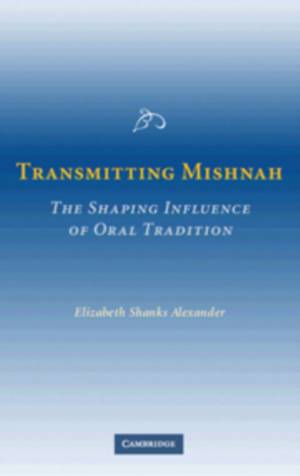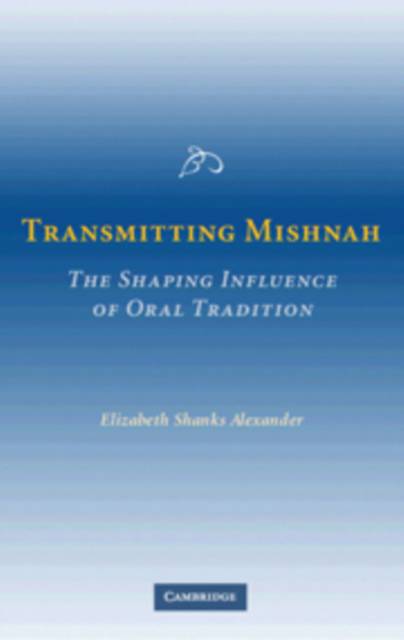
- Afhalen na 1 uur in een winkel met voorraad
- Gratis thuislevering in België vanaf € 30
- Ruim aanbod met 7 miljoen producten
- Afhalen na 1 uur in een winkel met voorraad
- Gratis thuislevering in België vanaf € 30
- Ruim aanbod met 7 miljoen producten
Zoeken
Transmitting Mishnah
The Shaping Influence of Oral Tradition
Elizabeth Shanks Alexander
Paperback | Engels
€ 76,45
+ 152 punten
Uitvoering
Omschrijving
Departing from the conventional view of mishnaic transmission as mindless rote memorisation, Transmitting Mishnah, first published in 2006, reveals how multifaceted the process of passing on oral tradition was in antiquity. Taking advantage of the burgeoning field of orality studies, Elizabeth Shanks Alexander has developed a model of transmission that is both active and constructive. Proceeding by means of intensive readings of passages from tractate Shevuot and its Talmudic commentaries, Alexander alerts us to the fact that transmitters and handlers of mishnaic text crafted both the vagaries of expression and its received meanings. She illustrates how the authority of the Mishnah grew as the result of the sustained attention of a devoted community of readers and students. She also identifies the study practices and habits of analysis that were cultivated by oral performance and shows how they were passed on in tandem with the verbal contents of the Mishnah, thereby influencing how the text was received and understood.
Specificaties
Betrokkenen
- Auteur(s):
- Uitgeverij:
Inhoud
- Aantal bladzijden:
- 264
- Taal:
- Engels
Eigenschappen
- Productcode (EAN):
- 9780521104623
- Verschijningsdatum:
- 19/03/2009
- Uitvoering:
- Paperback
- Formaat:
- Trade paperback (VS)
- Afmetingen:
- 152 mm x 229 mm
- Gewicht:
- 390 g

Alleen bij Standaard Boekhandel
+ 152 punten op je klantenkaart van Standaard Boekhandel
Beoordelingen
We publiceren alleen reviews die voldoen aan de voorwaarden voor reviews. Bekijk onze voorwaarden voor reviews.











